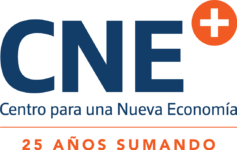Professor of Professional Practice in International and Public Affairs
Research Director
Policy Director
DOWNLOAD
SHARE
The Puerto Rican economy has already experienced a “lost decade”—to use the term that the Economic Commission for Latin America and the Caribbean, ECLAC, coined in the 1980s for Latin America and that has been widely used at the international level since then—and, if no action is adopted soon, it will continue on a negative path for the foreseeable future. The contraction of the island’s Gross National Product (GNP) has been one of the worst in the world over the past decade, and is intertwined with a deep fiscal and debt crisis that, if not arrested, will continue to push the economy in a downward spiral and the country into a deeper crisis.
Although the Puerto Rican authorities have adopted austerity measures for several years, including a reduction of government payroll, tax increases, pension reform, and changes to collective bargaining agreements, among others, the magnitude of the debt crisis was only fully recognized very late in this process, particularly when Governor Alejandro Garcia Padilla announced in June 2015 that the public sector debt was “unpayable”. In turn, the Commonwealth was largely out of the radar of the U.S. Administration—and, more broadly, of the U.S. political system and public opinion—until that announcement was made. The Administration has made clear that the solution requires access to debt resolution procedures that the Commonwealth lacks at present, and that this requires action by the U.S. Congress. Despite the urgency of the matter, Congress has failed to take timely action.1 This forced the Puerto Rican Legislature to authorize the Governor on April 6th to default on potentially all debts in order to use the increasingly scarce government revenues to finance essential government services. The capacity of the Puerto Rican authorities to face the crisis is extremely limited due to the lack of the traditional instruments of macroeconomic policy. It lacks, first of all, autonomous monetary and exchange rate policies. This is the principal reason why the Commonwealth’s crisis has been compared to that of Greece—“the Greece of the U.S.” But, due to the deep deterioration of its public finances, it also lacks the space to undertake a counter-cyclical fiscal policy. Finally, its subordinate political status makes it dependent on decisions by U.S. Congress and Federal Courts without much of a voice on those decisions.
A solution to the fiscal and debt crisis needs more than short-term solutions: it requires the renewal of economic growth. Indeed, in the absence of growth, solutions to the debt crisis will not be sustainable. But renewing economic growth requires identifying and launching new dynamic production activities, as the model of development was already exhausted prior to the crisis, and was barely propped up by tax schemes that attracted foreign investment but did little to foment indigenous development opportunities. 2 Traditional structural reforms, by themselves, are unlikely to generate new dynamic sectors, which must therefore be encouraged by an active industrial policy, supported by some legal provisions and institutional transformations, notably exempting Puerto Rico from the Jones Act (P.L. 66-261; 46 U.S.C.A. §688).
This Policy Brief presents an integrated view of the short and long-term dimensions of the policy packages that must be implemented. The first section reviews basic facts about the economy of Puerto Rico. The second looks at the fiscal and debt crisis and proposals to solve them. The third analyzes the structural features of the economy and the general characteristics of the industrial policy that must be put in place.
1 On June 9, 2016, the U.S. House of Representatives approved H.R. 5278, also known as “PROMESA”, which provides a mechanism for Puerto Rico to restructure its debts in conjunction with a strong oversight board and other provisions.
2 This is reflected in the fact that the Puerto Rican economy started to contract prior to the subprime crisis in the summer of 2007 that marks the beginning of the 2007-09 U.S. financial crisis.
